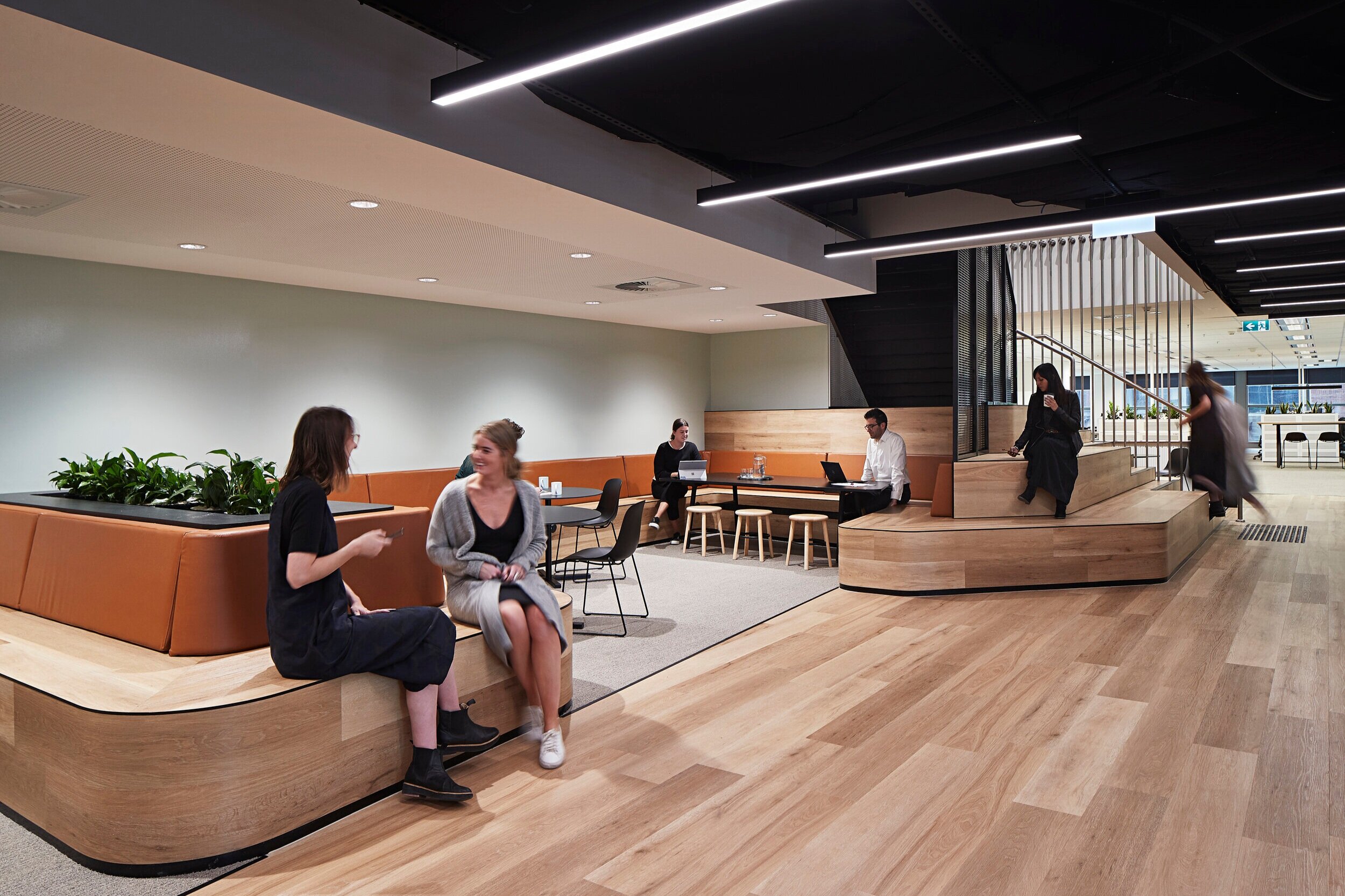Building a resilient workplace.
Now, more than ever, we need the advantages of a flexible workplace to adapt to changing business environments and the way we work.
Remote working during 2020 has fast-tracked the visibility and connectedness of our teams. Now, thanks to technology, everyone is accessible via meeting and collaboration apps, and organisations are more integrated than ever. With meetings taking place at the click of a button, we have created a closer world, we are learning to work more flexibly, and we will be able to use our physical workplace to better effect because of it.
Organisations who leverage this agile mindset will empower their teams to work more creatively and collaboratively, and adapt with speed to stay resilient and competitive in a disrupted market.
Lockdown has reshaped our thinking.
The lockdowns we have experienced in New Zealand to prevent the spread of Covid-19 have provoked every industry to rethink how teams operate in physical and digital space. We are not only planning how to manage health and well-being, but also rethinking technology platforms, work settings and new ways of working. There is a new opportunity to capitalise on the effects of the rapid digitisation that has taken place to better utilise our agile workplace environments, or transition into one.
Three workplace developments we see in this new environment:
1. Building workplace culture with collaboration hubs.
We know most organisations cannot eradicate the physical workplace, as it is such an essential canvas for social connection and interaction. And nothing builds workplace culture and inclusion like being in the same space. Whether this means collaborating and brainstorming a project, or simply getting creative with our peers over a coffee. Physical beats virtual when we need to gauge emotional responses and gain the well-being benefits of office friendships.
As people return to their workspace more mobile – with laptops over fixed PCs, for example – we can foster greater cross-functional collaboration by upgrading our innovation hubs and project spaces. Teams can come together to workshop and develop ideas, using shared technology platforms to discuss and capture projects collectively, before dispersing to a focus zone to action and implement.
Reimagined as a powerful ideas hub, the physical workplace can be purpose-made for teams and innovation to flourish.
2. Flexible, efficient, multi-use environments.
Spaces that can be easily reconfigured by teams for different tasks, offer a more flexible and resilient office and also create floor plate efficiency. Movable and flexible furniture leads to multi-use working environments that can be set up, relocated or reconfigured quickly.
Reshaped workpoints, roll-away or fold-away working surfaces, sit–stand desks, mobile storage, mobile AV units and whiteboards all make a workplace smarter and more adaptable. Moveable desks allow us to easily shift and social distance, while desks that need cleaning can be moved to another space for processing.
3. The need for more meeting spaces.
With more online meetings taking place, we need more meeting points where video conferencing can take place easily, connecting regional offices, central hubs and client sites. While some suggest this could happen from a home office, interruptions create professionalism issues for many people – whether due to poor acoustics and sound quality, a child or pet entering mid-meeting, or connectivity issues.
Meeting spaces also serve multiple purposes in a flexible workplace. When not in use for meetings, they can be used as a quiet room, and their physical form – whether a pod or full-height partitions – improves office topography, offering both a visual break and noise transfer reduction.
Business continuity and remote working.
While ensuring we have supportive workplace settings moving forward, maintaining the ability to work from home at short notice is still critical. There may be ongoing need in the foreseeable future for teams to work remotely or at home, if required.
By building flexibility into our physical workplaces, empowering our teams with tools, tech and skills, and maintaining a set-up at home, organisations will be able to quickly adjust, mobilising between work and home as required to ensure business continuity.
People are at the heart.
No one can make absolute predictions. We can only iterate as experience validates theory. But we do know we need to consider people’s well-being in our various workspaces in a holistic and integrated way. We also know a strong social fabric is essential for organisational culture and productivity, and maintaining that is a major concern for team leaders.
Work is all about people, and we do not see the demise of the physical workplace. We see it adapting and the best aspects only getting stronger, with spaces and settings designed to handle and support a much more dynamic situation and mindset. Success lies in how we bring new insights to activate changes for today and tomorrow to remain resilient.







